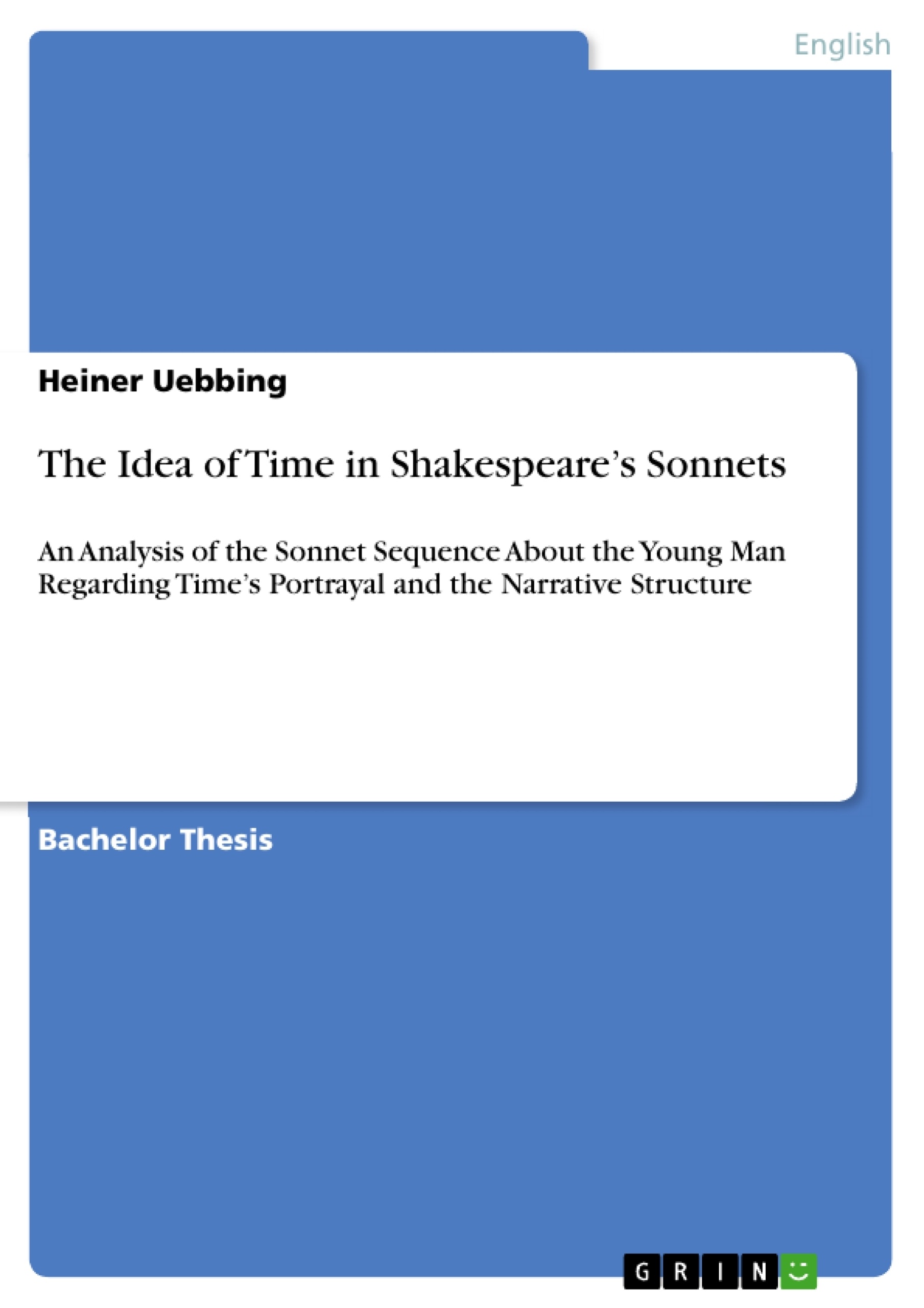In this thesis essential sonnets of Shakespeare will be analysed thoroughly and examined for proof of a narrative that addresses philosophical thoughts on the concept of time and characterises it as an antagonist in a fight with the poet character over his subject of affection, the young friend and his beauty.
While the sonnets are usually treated as individual pieces of work, there are connections between them one cannot oversee when reading them consecutively. The idea of time is one of those connections and a case can be made that it is a constant character in this series of sonnets.
This description of the concept of time concurrently brings to mind the poet character‟s protagonist role in the sequence. Since the sonnets are read through his perspective, the reader is inevitably inclined to take his side as well. The third major character, the young friend, can thus be regarded as the subject of affection for the protagonist. Thus, the sonnets can be seen as a narrative containing three major characters and their journey.
Table of Contents
- Introduction
- 1 Immortalisation of Beauty Through Procreation
- 1.1 Sonnet 5
- 1.2 Sonnet 12
- 1.3 Sonnet 15
- 2 Verse as a Means to Defeat Time
- 2.1 Sonnet 19
- 2.2 Sonnet 60
- 2.3 Sonnet 63
- 2.4 Sonnet 64
- 3 Paradigm Shift in Regard to the Idea of Time
- 3.1 Sonnet 123
- 3.2 Sonnet 124
- 3.3 Sonnet 126
- Conclusion
Objectives and Key Themes
This thesis analyses the concept of time and its personified portrayal as an antagonist in Shakespeare's sonnets dedicated to the young man. It explores the narrative structure of the sonnets, focusing on the interplay between the poet, time, and the young friend as they engage in a battle against the destructive forces of time. The thesis delves into the poet's various attempts to preserve the friend's beauty, including procreation, immortalisation through verse, and ultimately, a shift in perspective on time itself.
- The personification of time as a destructive force
- The poet's efforts to preserve the young man's beauty
- The narrative structure of the sonnet sequence
- The role of procreation in preserving beauty
- The power of verse to immortalise
Chapter Summaries
The first chapter examines the procreation sequence of sonnets, focusing on the poet's initial strategy to preserve the young friend's beauty by urging him to procreate. Sonnet 5, in particular, highlights the destructive nature of time and its ability to diminish beauty. The chapter analyzes how the poet grapples with the transient nature of beauty and its vulnerability to time's relentless passage.
The second chapter delves into the poet's attempt to immortalize the young man's beauty through verse. Sonnet 19 explores the power of poetry to overcome the limitations of time. This chapter examines how the poet seeks to transcend the ephemeral nature of physical beauty by capturing it in the enduring medium of verse.
The third chapter analyzes the sonnets where the poet undergoes a paradigm shift in his understanding of time. Sonnet 123 marks a turning point in the poet's perspective as he acknowledges the inevitability of time's passage and its impact on both beauty and life itself.
Keywords
This thesis explores the concept of time in Shakespeare's sonnets, focusing on the themes of beauty, preservation, time as antagonist, narrative structure, procreation, and verse as a means to immortalise. It examines the relationship between the poet, time, and the young friend and how their interactions shape the sonnet sequence.
- Citar trabajo
- Heiner Uebbing (Autor), 2014, The Idea of Time in Shakespeare’s Sonnets, Múnich, GRIN Verlag, https://www.grin.com/document/1141979



